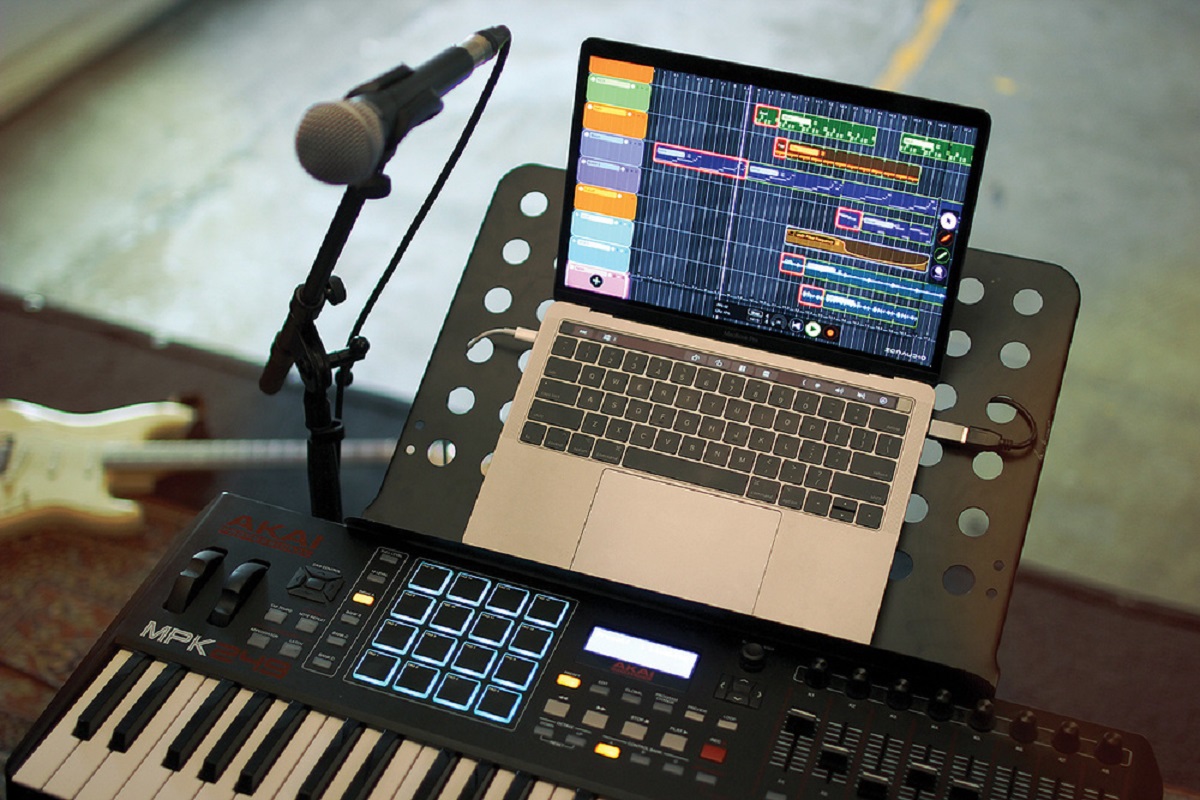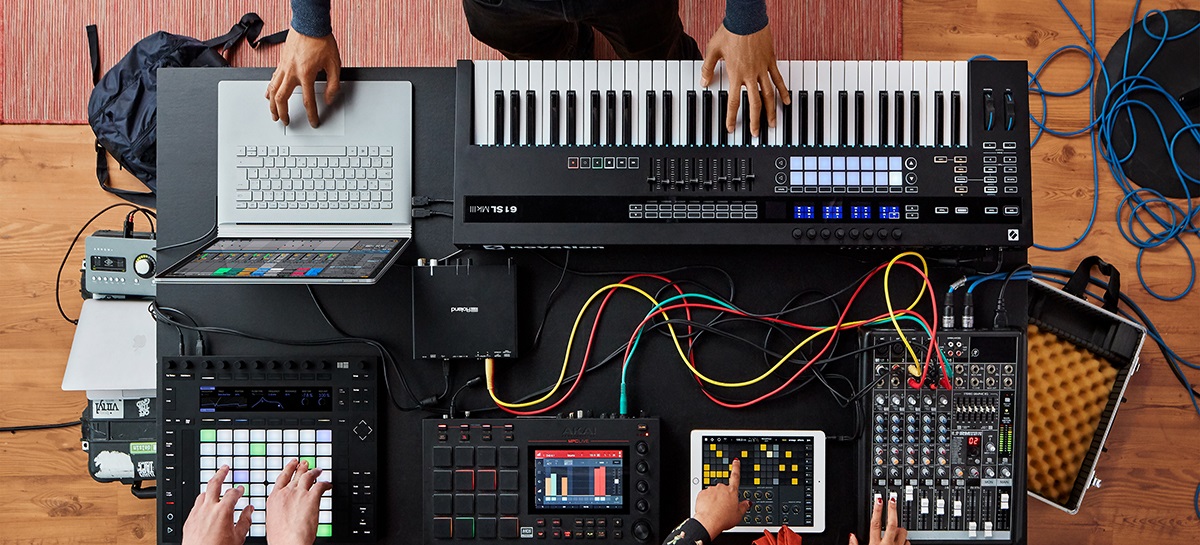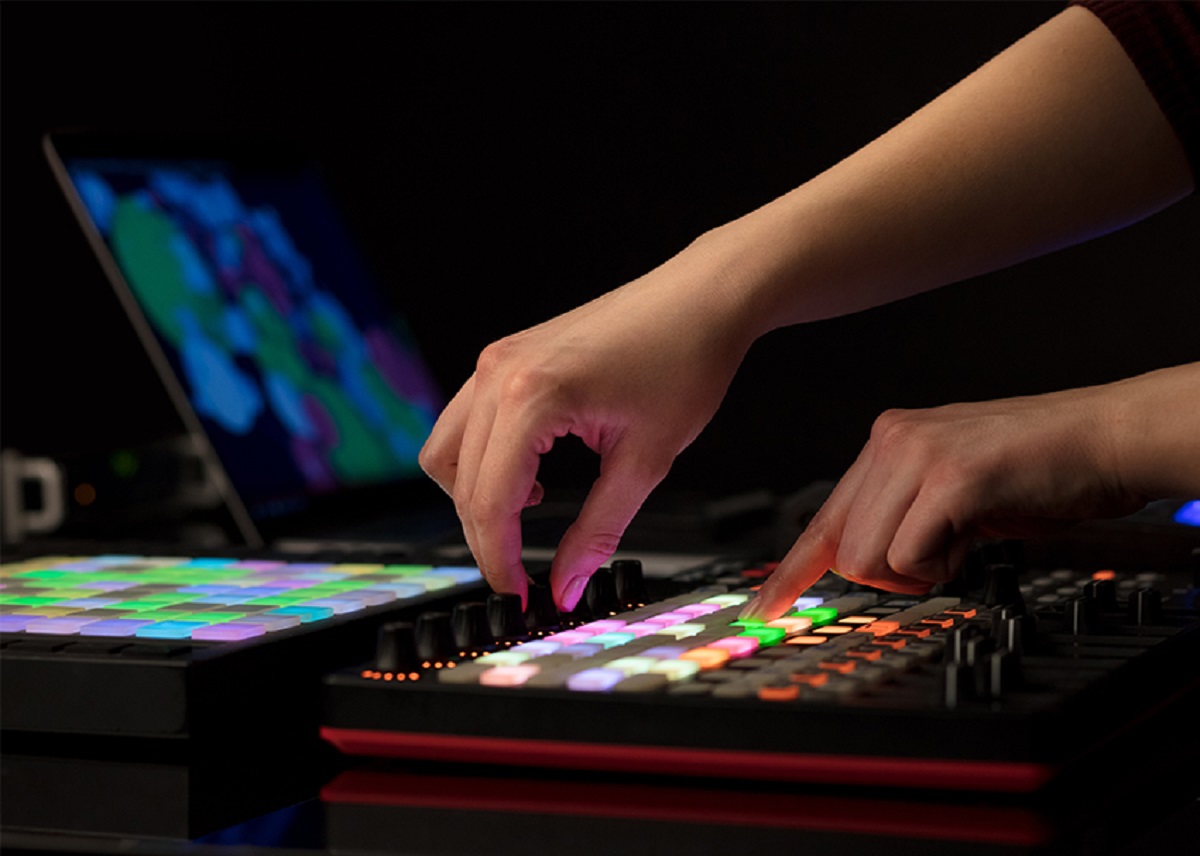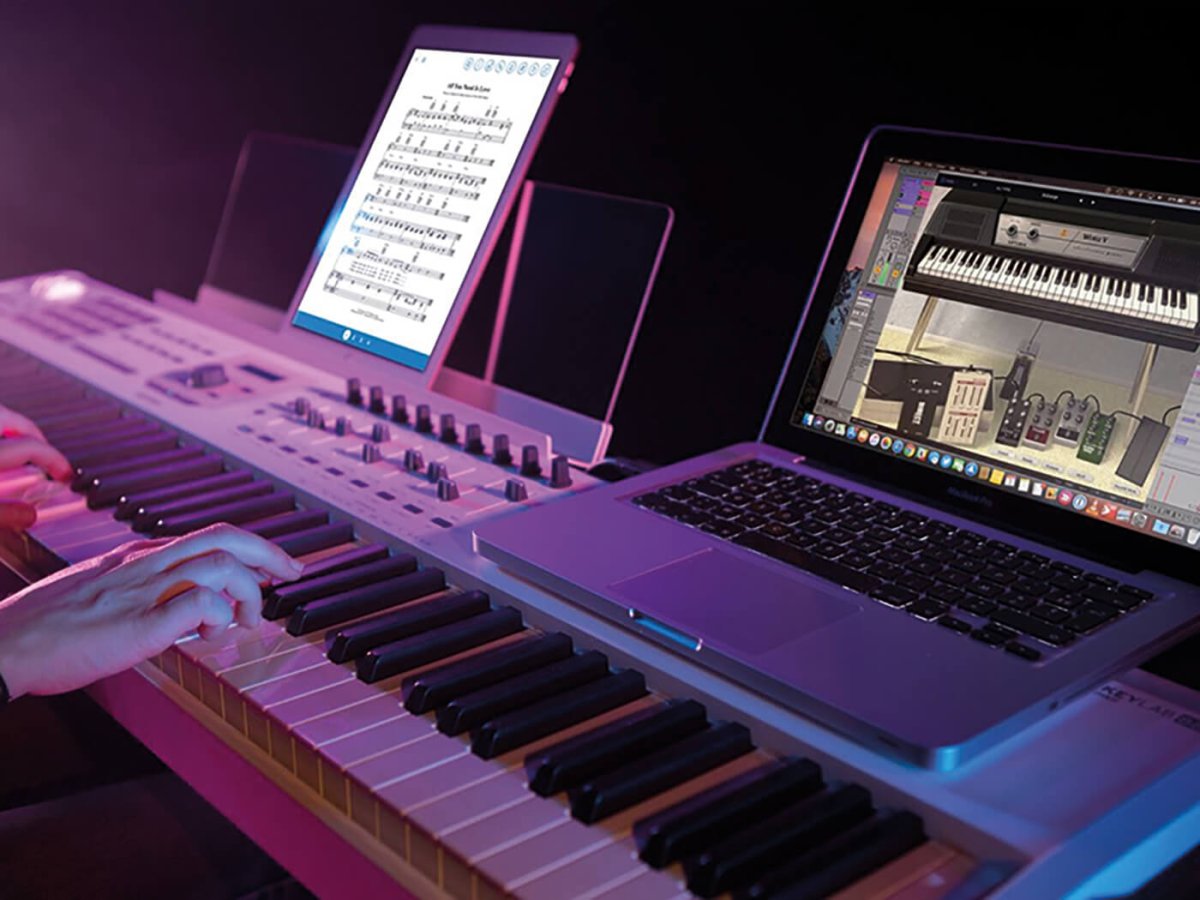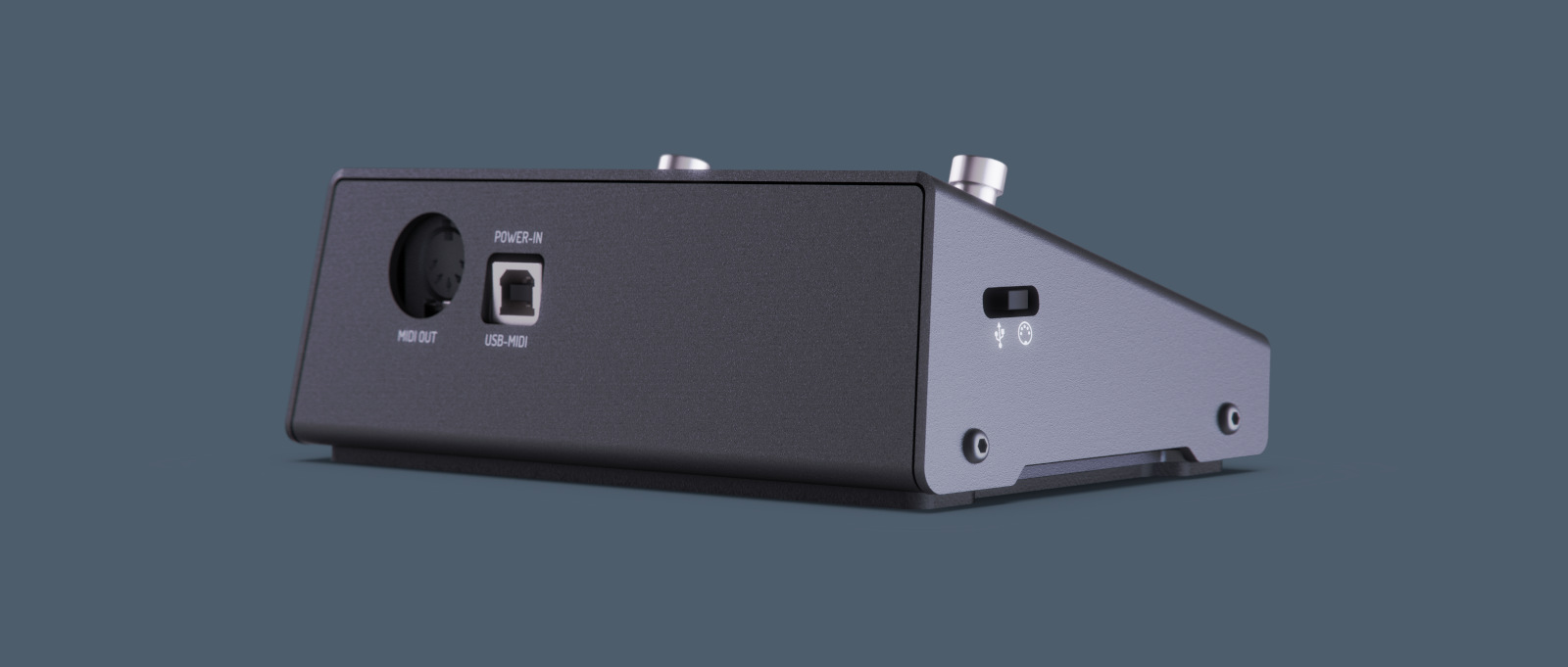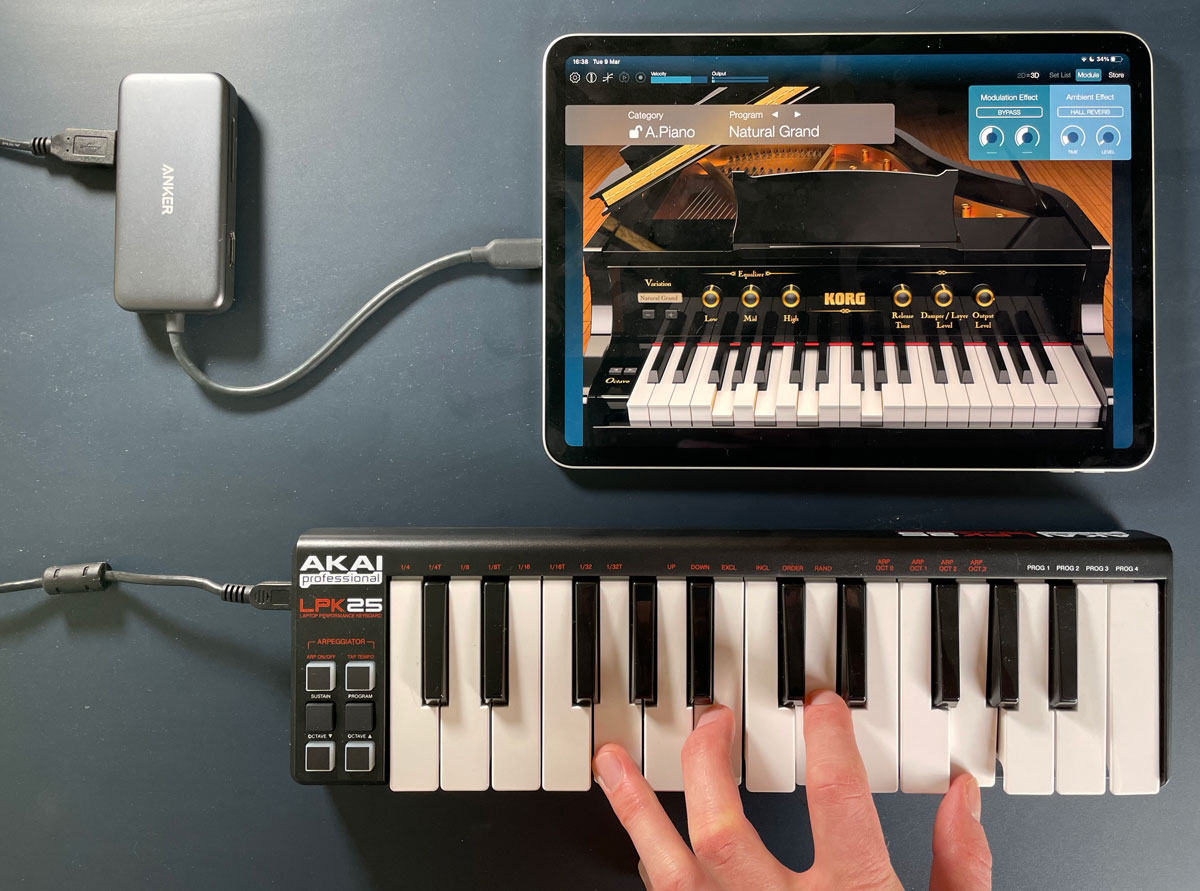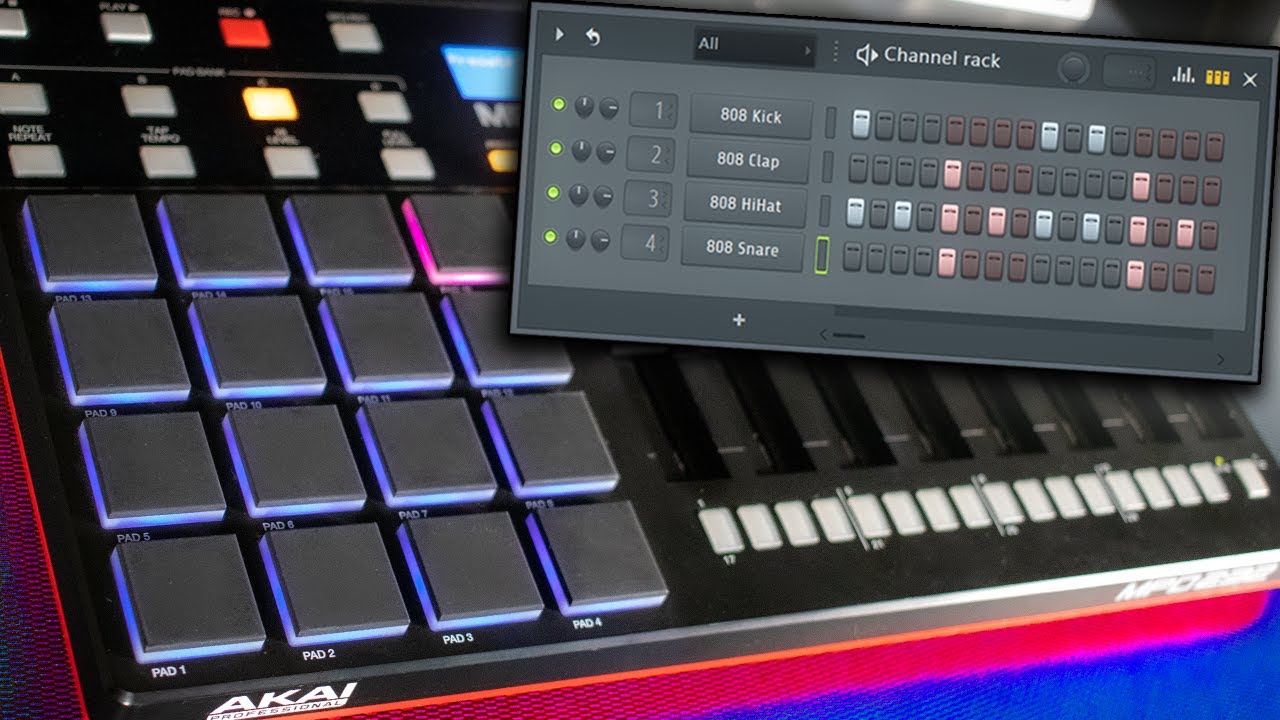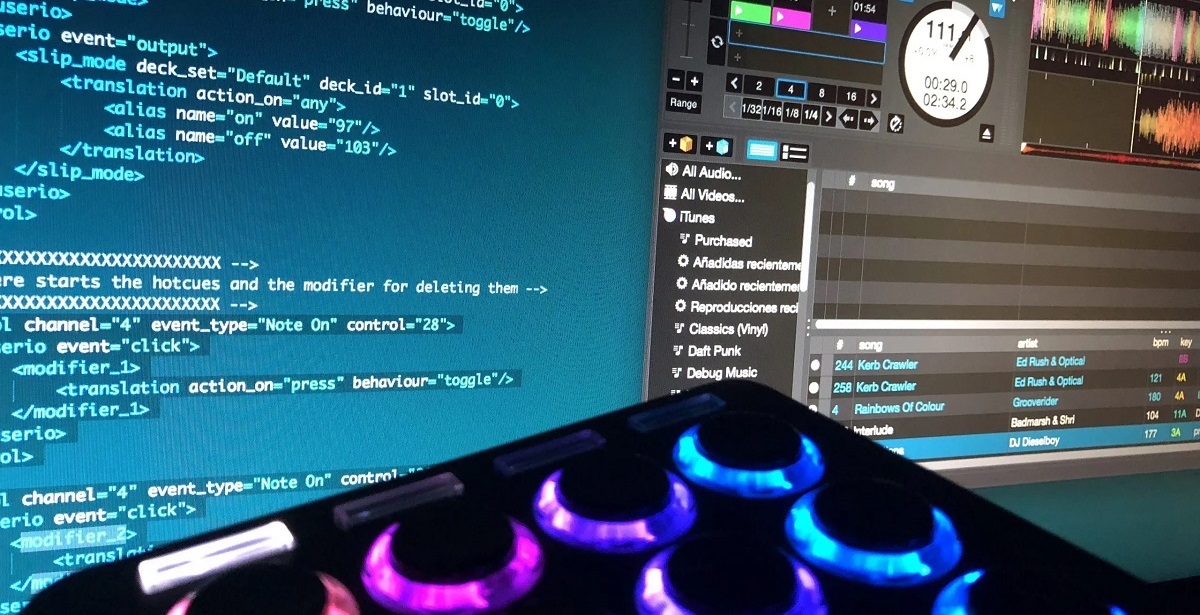Introduction
Are you ready to unlock the full potential of your MIDI keyboard in Ableton Live? If you're looking to elevate your music production and performance, understanding how to loop notes from a MIDI keyboard is a game-changer. By seamlessly integrating your MIDI keyboard with Ableton Live's powerful looping capabilities, you can create captivating musical arrangements and unleash your creativity in real time.
Looping has become a fundamental technique for musicians and producers across various genres, offering a dynamic way to layer sounds, build arrangements, and improvise live performances. With the intuitive interface of Ableton Live and the versatility of MIDI keyboards, you have the perfect tools at your disposal to delve into the world of looping and transform your musical ideas into immersive sonic experiences.
In this guide, we'll delve into the essential steps for setting up your MIDI keyboard in Ableton Live, enabling MIDI input for looping, and using your MIDI keyboard to trigger and control loops. Additionally, we'll explore valuable tips for maximizing the effectiveness of your looping endeavors, empowering you to harness the full potential of your MIDI keyboard within the dynamic environment of Ableton Live.
Whether you're a seasoned producer or a budding musician, mastering the art of looping with your MIDI keyboard in Ableton Live opens up a realm of possibilities for live performances, studio productions, and spontaneous musical exploration. Let's embark on this journey to unlock the boundless creativity and expression that await at the intersection of MIDI keyboards and Ableton Live's looping prowess.
Setting up your MIDI keyboard in Ableton Live
Before diving into the world of MIDI keyboard looping in Ableton Live, it’s crucial to ensure that your MIDI keyboard is seamlessly integrated with the software. Follow these essential steps to set up your MIDI keyboard and establish a solid foundation for your looping endeavors:
- Connect your MIDI keyboard: Begin by connecting your MIDI keyboard to your computer using a USB cable or MIDI interface. Ensure that the necessary drivers are installed, and the device is recognized by your computer.
- Launch Ableton Live: Open Ableton Live on your computer and navigate to the preferences menu. Select the “MIDI/Sync” tab to access the MIDI settings.
- Configure MIDI input and output: In the MIDI settings, locate your MIDI keyboard in the list of available input and output devices. Enable the input for your MIDI keyboard to ensure that Ableton Live can receive MIDI data from the device.
- Assign MIDI channels: If your MIDI keyboard allows for channel assignment, configure the MIDI channels to align with your preferred setup. This step is particularly important if you intend to use multiple instruments or devices simultaneously.
- Verify MIDI signal: To confirm that your MIDI keyboard is successfully integrated, play some notes or chords on the keyboard while monitoring the MIDI signal within Ableton Live. You should see the MIDI input indicator lighting up in response to your playing.
By meticulously following these steps, you establish a seamless connection between your MIDI keyboard and Ableton Live, laying the groundwork for a fluid and responsive looping experience. With your MIDI keyboard primed for action, you’re ready to delve into the next crucial aspect: enabling MIDI input for looping.
Enabling MIDI input for looping
Once your MIDI keyboard is successfully set up in Ableton Live, the next pivotal step is to enable MIDI input for looping, allowing you to seamlessly integrate your keyboard into the looping workflow. By configuring MIDI input settings, you can initiate and manipulate loops directly from your MIDI keyboard, adding a tactile and expressive dimension to your musical creations. Here’s how to enable MIDI input for looping in Ableton Live:
- Access the MIDI mapping mode: In Ableton Live, enter the MIDI mapping mode by clicking on the “MIDI” button in the upper right corner of the interface or by pressing “Command + M” (Mac) or “Ctrl + M” (Windows) on your keyboard.
- Select the desired parameters: Identify the looping functions and controls you wish to assign to your MIDI keyboard. These may include triggering loops, recording new clips, adjusting loop length, or activating effects within your live performance setup.
- Map MIDI controls to looping functions: Click on the parameters within Ableton Live that you want to control with your MIDI keyboard, then manipulate the corresponding control on your MIDI keyboard. This action assigns the MIDI control to the selected parameter, establishing a direct link between your keyboard and the looping functions in Ableton Live.
- Test the MIDI mappings: After assigning MIDI controls to looping functions, verify that the mappings function as intended. Trigger loops, adjust parameters, and experiment with the MIDI controls to ensure a seamless and responsive connection between your MIDI keyboard and the looping features in Ableton Live.
- Save MIDI mappings: Once you’ve fine-tuned the MIDI mappings for looping, save the configuration to ensure that your MIDI keyboard retains its assigned functions across sessions, allowing for consistent and efficient control over your looping setup.
By enabling MIDI input for looping, you empower your MIDI keyboard to serve as a versatile and expressive tool for shaping and manipulating loops in real time. This seamless integration of MIDI control elevates the interactive and improvisational aspects of your musical performances, offering a fluid and intuitive means of engaging with Ableton Live’s looping capabilities.
Using the MIDI keyboard to trigger and control loops
With MIDI input enabled for looping in Ableton Live, your MIDI keyboard becomes a powerful instrument for triggering and controlling loops with precision and expressiveness. Whether you’re crafting intricate arrangements in the studio or delivering captivating live performances, leveraging the capabilities of your MIDI keyboard enhances your ability to shape and manipulate loops in real time. Here’s how you can harness the potential of your MIDI keyboard to trigger and control loops in Ableton Live:
- Initiating loop recording: Utilize your MIDI keyboard to initiate the recording of loops, allowing you to capture spontaneous musical ideas and seamlessly integrate them into your compositions. By assigning a MIDI control to the loop recording function, you can effortlessly capture performances and build layered arrangements on the fly.
- Triggering loop playback: Assign MIDI controls to trigger the playback of existing loops, enabling you to seamlessly launch and manipulate rhythmic and melodic elements within your compositions. This tactile approach to loop triggering adds a dynamic and hands-on dimension to your creative process.
- Adjusting loop parameters: Use the knobs, sliders, or keys on your MIDI keyboard to manipulate loop parameters such as volume, pan, and effects settings. This hands-on control over loop parameters empowers you to sculpt the sonic characteristics of your loops with precision and nuance, fostering a deeply immersive and interactive music-making experience.
- Layering and overdubbing: Leverage the MIDI keyboard to layer new musical phrases on top of existing loops, facilitating the creation of rich and evolving sonic tapestries. The ability to overdub additional elements in real time adds a captivating live performance aspect to your looping endeavors, allowing for spontaneous and organic musical expression.
By integrating your MIDI keyboard into the loop triggering and control process, you infuse your musical creations with a palpable sense of dynamism and immediacy. The tactile nature of MIDI control fosters a deeper connection with your music, enabling you to shape and mold loops with the fluidity and responsiveness that traditional software-based control methods may not provide. With your MIDI keyboard as a central conduit for loop triggering and manipulation, you unlock a realm of creative possibilities within the dynamic environment of Ableton Live.
Tips for effective looping
Mastering the art of effective looping with your MIDI keyboard in Ableton Live involves a blend of technical proficiency, creative exploration, and performance finesse. To elevate your looping endeavors and unlock the full potential of your musical expressions, consider the following tips and techniques:
- Quantize MIDI input: When recording MIDI input from your keyboard, consider enabling quantization to align note timings with the grid, ensuring a tight and polished rhythmic foundation for your loops.
- Experiment with loop lengths: Explore the dynamic interplay of different loop lengths to create evolving rhythmic patterns and harmonic progressions. Varying loop lengths can inject a sense of unpredictability and movement into your compositions.
- Utilize MIDI effects: Incorporate MIDI effects such as arpeggiators, chord generators, and scale quantizers to expand the sonic possibilities of your MIDI keyboard, adding depth and complexity to your looped performances.
- Assign expressive controls: Map MIDI controls for parameters like velocity, aftertouch, and modulation to infuse your loops with nuanced dynamics and emotive articulations, enriching the musicality of your performances.
- Integrate live instrumentation: Seamlessly integrate live instrumental performances with your MIDI keyboard loops, fostering a harmonious blend of electronic and organic elements within your compositions.
- Embrace improvisation: Cultivate a spirit of spontaneity and improvisation in your looping sessions, allowing for serendipitous musical discoveries and unexpected creative tangents.
- Experiment with loop manipulation: Explore real-time loop manipulation techniques such as reverse playback, granular synthesis, and pitch modulation to sculpt captivating sonic textures and transformations.
- Engage with MIDI control scripts: Explore custom MIDI control scripts or presets tailored for your specific MIDI keyboard, unlocking tailored functionalities and seamless integration with Ableton Live’s looping features.
By incorporating these tips into your looping workflow, you expand your creative palette and refine your approach to leveraging the expressive potential of your MIDI keyboard within the realm of looping. Embrace experimentation, embrace spontaneity, and embrace the boundless opportunities for sonic innovation that await as you embark on your looping journey with Ableton Live and your MIDI keyboard.
Conclusion
As we conclude our exploration of looping with a MIDI keyboard in Ableton Live, it’s evident that the integration of these tools yields a transformative and immersive approach to music production and performance. By setting up your MIDI keyboard, enabling MIDI input for looping, and utilizing the keyboard to trigger and control loops, you’ve unlocked a dynamic and expressive avenue for crafting captivating musical arrangements and engaging live performances.
The marriage of MIDI keyboards and Ableton Live’s looping capabilities empowers you to navigate the realms of creativity with fluidity and finesse, offering a tactile and intuitive means of sculpting sonic landscapes in real time. Whether you’re layering melodic motifs, sculpting rhythmic textures, or crafting intricate soundscapes, the seamless integration of your MIDI keyboard amplifies the interactive potential of looping, inviting you to shape and mold musical expressions with unprecedented immediacy.
As you embark on your looping journey, remember that the tips for effective looping serve as guiding beacons, illuminating pathways for sonic exploration and artistic innovation. Embrace the fusion of technical precision and creative spontaneity, allowing your MIDI keyboard to serve as a conduit for boundless musical expression and emotive storytelling.
Ultimately, the synergy between your MIDI keyboard and Ableton Live transcends traditional paradigms of music-making, inviting you to embark on a sonic odyssey where every keystroke and modulation gesture becomes a brushstroke in the canvas of sound. Embrace the fluidity of looping, the expressiveness of MIDI control, and the limitless horizons of musical possibility that unfold as you harness the transformative power of your MIDI keyboard in Ableton Live.
With each loop, each chord progression, and each sonic metamorphosis, you immerse yourself in a realm where the boundaries between performer and composer blur, giving rise to a dynamic and symbiotic relationship between human creativity and technological prowess.
So, armed with your MIDI keyboard and the boundless potential of Ableton Live, venture forth into the sonic tapestry, where looping becomes a conduit for musical storytelling, and your MIDI keyboard emerges as a brush in the hands of a sonic artist, painting vivid and evocative landscapes of sound.







